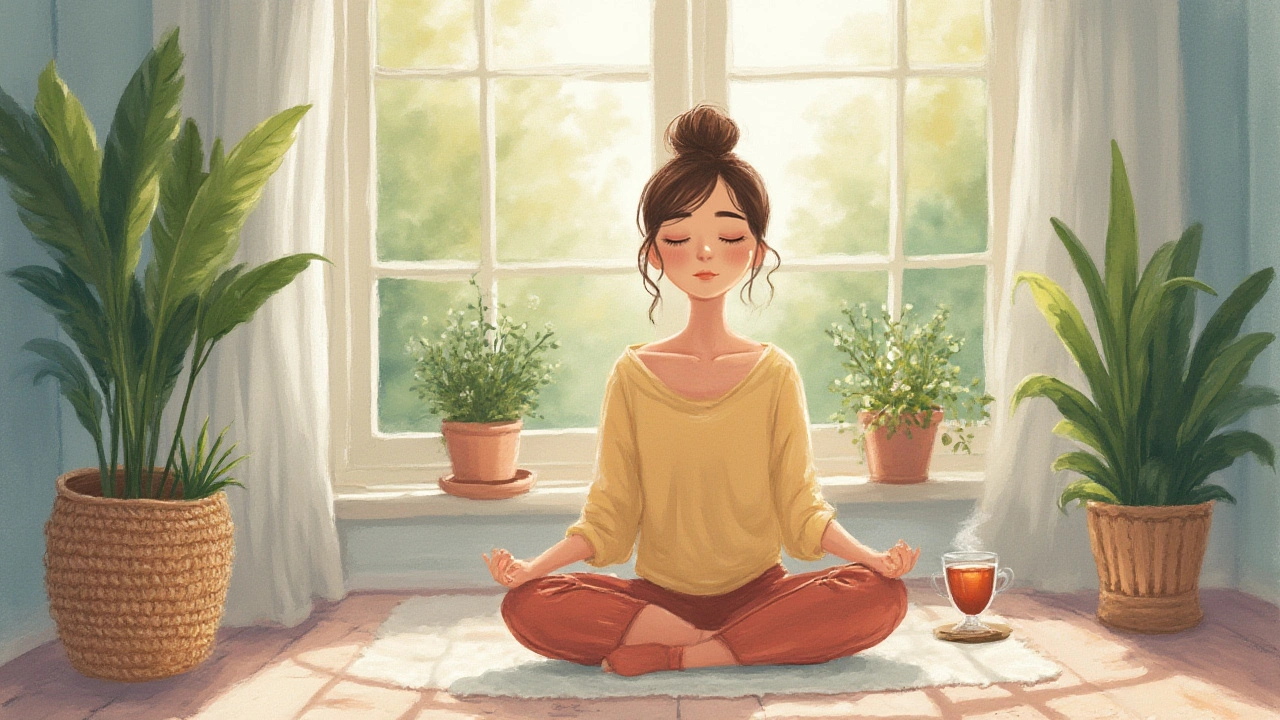Feeling anxious right now? Try a single tool below before scrolling on. Small, specific actions calm your body fast and give your brain room to think. These aren’t long rituals—use them while waiting for a bus, at your desk, or just before sleep.
Start with controlled breathing. Box breathing is easy: inhale for 4 seconds, hold 4, exhale 4, hold 4. Do that for one to three minutes. Your heart rate drops, your mind slows, and you get instant relief. If 4 seconds feels long, try 3-3-3-3 instead.
When worry spins, use the 5-4-3-2-1 grounding trick: name 5 things you see, 4 you can touch, 3 you hear, 2 you smell, and 1 you taste or imagine tasting. It forces focus out of the future and into the present. Combine that with progressive muscle relaxation: tense each muscle group for 5–8 seconds, then let go. Start at your feet and work up to your face.
Move your body. A brisk 10-minute walk or a few sets of simple exercises (jumping jacks, squats, or a short yoga flow) shifts adrenaline and calms nerves. Even standing up and swinging your arms for 60 seconds helps when you can’t do more.
Use a 15-minute worry period. Set a timer and let yourself worry—only during that time. If worries pop up outside it, jot them down and return later. This trains your brain to limit anxious thinking to a controlled slot, which reduces constant background anxiety.
Try cognitive labeling: catch a thought and say, “That’s anxiety,” or “That’s a what-if.” Labeling creates distance between you and the thought so it loses power. Ask one practical question: What's one next step I can take? If none, ask what you can do to feel safer or more comfortable right now.
Sleep and caffeine matter more than most people expect. Stick to a consistent sleep schedule and shut screens 60 minutes before bed. Cut caffeine after mid-afternoon—half your anxiety could be wired to a late coffee.
If you use TRICARE, check your mental health benefits and drug coverage through your plan. Tools like TRICARE Prescription Explorer can help you verify which medications and therapies are covered so you don’t hit surprises when you seek care.
When should you get professional help? If anxiety stops you from working, sleeping, or connecting with people, or if panic attacks start, talk to your primary care or a mental health provider. Therapy, guided self-help, and sometimes medication make a big difference—no need to struggle alone.
Pick one or two of the tips above and use them for a week. Track what helps and keep the ones that actually lower your stress. Real relief often comes from small, consistent habits, not perfect routines.

Explore practical relaxation techniques that truly help manage anxiety, offering natural, daily strategies for calm minds and happier lives.
Read More
Health anxiety can be overwhelming, but with the right strategies, it is possible to lead a worry-free life. This article offers useful tips and techniques for managing and reducing health anxiety, empowering you to regain control over your mental well-being. Learn how to recognize symptoms, implement practical steps, and seek appropriate support.
Read More
An insightful article exploring the impact of positive thinking on health anxiety. This piece delves into practical tips, scientific facts, and real-world applications that can help individuals mitigate their health anxiety and lead a healthier, more balanced life.
Read More
Creative Arts Therapies offer innovative and effective ways to manage anxiety by engaging in art forms such as music, drama, and painting. These therapies provide a non-verbal outlet for expression, fostering emotional healing. Discover how they differ from traditional approaches and the unique benefits they offer.
Read More